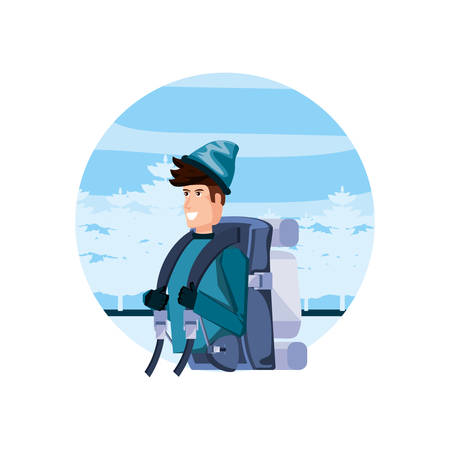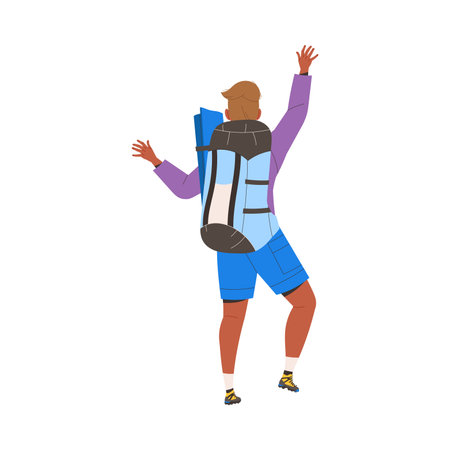Understanding Wilderness First Aid
When you’re hiking in the vast and beautiful American backcountry, being prepared isn’t just about having the right gear—it’s also about knowing how to handle emergencies. Wilderness first aid is a set of skills designed to help hikers manage injuries and illnesses when professional medical help is hours or even days away. Unlike standard first aid, which assumes emergency services are nearby, wilderness first aid recognizes the unique challenges of remote environments.
What Makes Wilderness First Aid Different?
In the wilderness, hikers face unpredictable conditions—changing weather, rough terrain, and limited resources. If someone gets hurt or sick, it may not be possible to call 911 or get to a hospital quickly. That’s why wilderness first aid focuses on:
- Improvising with what you have
- Prolonged care for hours or days
- Making critical decisions about evacuation
- Preventing small problems from becoming big ones
Why Is It Important for Hikers?
The American backcountry offers stunning landscapes—from the Rockies to the Appalachians—but it also comes with real risks. In these remote areas, help may be far away, and cell service can be spotty at best. Knowing wilderness first aid means you can:
- Stay calm and act confidently in emergencies
- Reduce the severity of injuries or illnesses
- Help yourself and others until rescue arrives
- Make smart choices about whether to stay put or seek help
Common Backcountry Emergencies
| Emergency Type | Description | Key First Aid Actions |
|---|---|---|
| Sprains & Fractures | Twisted ankles or broken bones from uneven trails | Stabilize limb, reduce movement, improvise splint |
| Cuts & Scrapes | Minor injuries from rocks or branches | Clean wound, control bleeding, bandage properly |
| Heat Illnesses | Heat exhaustion or heat stroke on hot days | Move to shade, hydrate, cool down body temperature |
| Hypothermia | Dangerously low body temperature in cold/wet conditions | Add dry layers, provide warm fluids, insulate from ground |
| Bites & Stings | Bugs, ticks, or snakes common in wild areas | Remove stinger/tick safely, clean area, monitor for reaction |
| Altitude Sickness | Trouble adjusting to high elevations in mountains | Descend if symptoms worsen, rest, hydrate well |
The Takeaway for Hikers
No matter where your adventure takes you in America’s wild places, understanding wilderness first aid helps ensure you’re ready for whatever comes your way. It’s an essential skill set that keeps hiking safe and enjoyable—even far off the beaten path.
2. Essential Gear for Wilderness First Aid Kits
If you’re hitting the trails anywhere in the U.S., having a well-stocked and region-appropriate first aid kit is key to staying safe and prepared. The right gear can make all the difference, whether you’re hiking the Rockies, trekking through Pacific Northwest rainforests, or exploring desert canyons. Here’s a detailed breakdown of must-have items and tips on how to customize your kit based on where—and when—you’re hiking.
Basic First Aid Kit Essentials
| Item | Purpose | Recommended Quantity |
|---|---|---|
| Adhesive Bandages (various sizes) | Cover minor cuts, blisters, scrapes | 10-15 |
| Sterile Gauze Pads & Tape | Dress larger wounds, control bleeding | 5-10 pads, 1 roll tape |
| Antiseptic Wipes/Ointment | Clean and disinfect wounds | 6-8 wipes, 1 small tube ointment |
| Tweezers & Safety Pins | Remove splinters, ticks; secure bandages | 1 each |
| Moleskin/Blister Pads | Treat and prevent blisters | 1 pack/4-6 pads |
| Elastic Bandage (ACE wrap) | Support sprains, strains, or wrap injuries | 1-2 rolls |
| Nitrile Gloves (non-latex) | Protect yourself when treating wounds | 2-4 pairs |
| CPR Face Shield/Mouth Barrier | Safe rescue breathing if needed | 1 shield/barrier mask |
| Pain Relievers (Ibuprofen/Acetaminophen) | Treat pain, inflammation, fevers | 6-10 tablets each type (in labeled containers) |
| Emergency Blanket (Mylar) | Treat shock or hypothermia; shelter from elements | 1 per person/group member |
Customizing Your Kit by Region & Season
Northern & Mountain Regions (Rockies, Sierra Nevada, Appalachians)
- Add: Hand warmers, extra emergency blanket, lip balm with SPF, insect repellent (especially during summer months), tick removal card.
- Why: Cold temps and biting insects are common; altitude can also cause headaches—pack altitude sickness medication if needed.
Pacific Northwest & Rainy Climates (Cascades, Olympic Peninsula)
- Add: Waterproof bandages/tape, extra dry bags for gear, antifungal cream.
- Why: Wet conditions increase risk of wound infection and foot problems.
Southeast & Humid Areas (Smokies, Everglades)
- Add: Electrolyte packets, hydrocortisone cream for bug bites/rashes, sting relief wipes.
- Why: Humidity and bugs can cause dehydration and skin irritation.
Southwest & Desert Areas (Grand Canyon, Utah Canyons)
- Add: Extra water purification tablets/drops, sunblock (SPF 30+), aloe gel for sunburns.
- Why: Extreme sun exposure and limited water sources are major concerns.
Tweaking Your Kit by Season
| Season | Additions/Modifications |
|---|---|
| Spring/Summer | Bite/sting kits, sunscreen, cooling towels, more hydration aids. |
| Fall/Winter | Chemical heat packs, lip balm/moisturizer, extra insulation like hats/gloves. |
Packing Tips for Hikers in the U.S.
- Kits should be easily accessible in your backpack—don’t bury them under heavy gear.
- If hiking in a group, coordinate so you don’t double up on bulky items but cover all needs.
- If anyone has allergies or medical conditions (like asthma or diabetes), carry extra meds and note emergency info on a card or phone app.
A thoughtfully packed wilderness first aid kit is your best friend on the trail. Take time before each trip to check expiration dates and adjust supplies as needed for your destination and the season. Stay safe out there!

3. Primary Assessment and Emergency Response
Step 1: Assess the Scene for Safety
Before you rush in to help, always check if the area is safe. Look out for falling rocks, wildlife, unstable ground, or other hazards. If the scene isn’t safe, don’t put yourself in danger—call for help and wait until it’s secure.
Quick Scene Safety Checklist
| Hazard | What to Look For | Action |
|---|---|---|
| Weather | Storms, lightning, extreme heat/cold | Find shelter or move away from exposed areas |
| Terrain | Loose rocks, cliffs, slippery surfaces | Avoid unstable areas; stay on solid ground |
| Wildlife | Bears, snakes, insects nearby | Back away slowly; make noise to alert animals |
| Other People | Panic, confusion among group members | Calm everyone and assign roles as needed |
Step 2: Primary Assessment – Check Responsiveness and ABCs
If the area is safe, approach the injured person and introduce yourself. Ask if they are okay. If they do not respond:
- Airway: Make sure their airway is clear.
- Breathing: Check if they are breathing normally (look, listen, feel).
- Circulation: Check for a pulse and look for severe bleeding.
If they’re unresponsive and not breathing, begin CPR if trained.
Primary Assessment Table: “ABCs” Overview
| A – Airway | B – Breathing | C – Circulation |
|---|---|---|
| Tilt head/lift chin Remove obstructions (dirt, vomit) |
Look for chest movement Listen for breath sounds Feel for airflow on your cheek |
Check pulse at neck or wrist Look for heavy bleeding or shock symptoms Control bleeding with pressure and bandages if needed |
Step 3: Prioritize Care Using the “Triage” System
If there are multiple injured people, use a triage system to decide who needs help first. Focus on life-threatening injuries such as blocked airways, severe bleeding, or no breathing.
Triage Priority Levels (Simple Guide)
| Status Color (US Standard) | Description/Example Injuries |
|---|---|
| Red (Immediate) | No breathing, severe bleeding, shock—needs urgent care now. |
| Yellow (Delayed) | Broken limbs but stable—help after immediate threats are handled. |
| Green (Minor) | Bumps, scrapes—can walk or move without assistance. |
| Black (Deceased) | No signs of life after attempted resuscitation. |
Step 4: Communicate with Search and Rescue Services (SAR) in the U.S.
If you need professional help, call 911 or activate your personal locator beacon (PLB). When talking to emergency dispatch or SAR teams, stay calm and provide clear information:
- Your location (use GPS coordinates or landmarks)
- The number of people involved and their conditions (using triage colors helps!)
- Description of injuries and what first aid has been given so far
- Your planned actions while waiting for rescue
- Your contact number or radio frequency if available
SAR Communication Example Script:
“I’m calling from the [trail name] near [landmark]. We have three hikers—one with a broken leg (yellow), one unconscious but breathing (red), one with minor cuts (green). We are at GPS coordinates [xxx]. We’ve controlled the bleeding and are staying put. Please advise.”
By following these primary assessment steps and knowing how to communicate with SAR teams in the United States wilderness, you can provide vital help during emergencies until professional rescuers arrive.
4. Managing Common Hiking Injuries and Illnesses
Practical Skills for Treating Trail Emergencies
When hiking in the wilderness, especially on U.S. trails, being able to manage injuries and illnesses is crucial. Here’s a handy guide to treating some of the most common issues hikers face, using straightforward techniques you can remember and apply with basic first aid supplies.
Sprains and Strains
Sprained ankles are probably the number one injury on American trails. If you or a hiking buddy twists an ankle:
- Rest: Stop walking and find a safe spot to sit.
- Ice: Use cold water from a stream (in a plastic bag if available) to reduce swelling.
- Compression: Wrap the ankle snugly with an elastic bandage or even a clean sock.
- Elevation: Prop the injured leg up on your pack to minimize swelling.
Fractures
If you suspect a bone may be broken (severe pain, swelling, limb looks deformed), do not try to reset it yourself. Here’s what you can do until help arrives:
- Sling and Splint: Immobilize the area using sticks, trekking poles, or rolled-up clothing secured with bandanas or shoelaces.
- Avoid Movement: Keep the person still and calm to prevent further damage.
- Monitor for Shock: Watch for pale skin, rapid pulse, or confusion, and keep them warm.
Bites: Insects and Snakes
| Bite Type | Treatment Steps |
|---|---|
| Mosquito/Tick | Remove tick gently with tweezers; clean bite area; monitor for rash or fever |
| Bee/Wasp | Scrape off stinger; apply ice; watch for allergic reaction (use epinephrine if prescribed) |
| Snake (U.S. species) | Keep calm; immobilize limb; seek medical help immediately; do NOT suck venom or use a tourniquet |
Hypothermia
This is a real risk on American mountains, even in summer. Early signs include shivering, slurred speech, and clumsiness. Here’s how to help:
- Shelter: Get out of wind and rain—use a tent, emergency blanket, or thick vegetation.
- Warmth: Remove wet clothes; add dry layers; insulate from ground with pads or packs.
- Food & Drink: Offer warm drinks (no alcohol); give high-energy snacks if they can swallow safely.
Packed First Aid Essentials for Hikers
| Item | Why You Need It |
|---|---|
| Tweezers | Ticks/splinters removal |
| Elastic Bandage | Ankle sprains/supports |
| Moleskin/Leukotape | Blister prevention/treatment |
| Epinephrine Auto-Injector* | Severe allergic reactions (*if prescribed) |
| SAM Splint or similar | Limb immobilization for fractures/sprains |
| Emergency Blanket | Treating hypothermia/shock protection |
The best way to be prepared is to practice these skills before heading out and always carry a basic first aid kit customized for your trip length and destination.
5. Evacuation and Navigation Strategies
When a wilderness emergency strikes, knowing how to get yourself or someone else to safety is just as important as first aid skills. Making smart decisions about evacuation, signaling for help, and using navigation tools can make all the difference out on the trail.
Critical Decision-Making for Self-Evacuation
The first step is deciding whether you should stay put or try to move. Ask yourself these questions:
| Question | Considerations |
|---|---|
| Is the injured person stable? | If not, moving may make things worse. |
| Is there an immediate danger (weather, wildlife, terrain)? | If yes, evacuation may be necessary despite injuries. |
| How far are you from help? | If help is close, staying put might be safer. |
| Do you have enough resources (water, food, shelter)? | Lack of supplies may require self-evacuation. |
Pro Tip:
In the U.S., “Stop, Think, Observe, Plan” (STOP) is a common method used by hikers to keep calm and make rational decisions during emergencies.
Signaling for Help in the Wilderness
If you decide that outside assistance is needed, signaling effectively can speed up your rescue. Use these methods commonly recognized in America:
- Whistle: Three short blasts are universally known as a distress signal.
- Signal Mirror: Use sunlight to flash toward rescuers or aircraft. Aim for three flashes at a time.
- Bright Clothing or Gear: Lay them out in open areas to catch attention from searchers above.
- Fire: Build three fires in a triangle if possible—a classic SOS signal.
- Cell Phone/PLB: If available, call 911 or activate a Personal Locator Beacon for GPS-based rescue.
Navigating to Safety with Tools and Techniques
If you need to move, knowing how to use navigation tools is crucial. Here’s a quick guide:
| Tool | How It Helps | American Context Tips |
|---|---|---|
| Map & Compass | Find direction and landmarks; avoid getting lost. | CARRY topographic maps of national parks/trails; know magnetic declination in your region. |
| GPS Device or Smartphone App | Pinpoints exact location and tracks route out. | Download offline maps; many U.S. trails use apps like Gaia GPS or AllTrails. |
| Cairns & Trail Markers (Blazes) | Aids following established routes back to trailheads. | Learn local trail marking systems—blazes are color-coded in many U.S. states. |
| Naturally Occurring Landmarks | Avoids circles; orient using rivers, ridges, or valleys. | Mental note: “Downhill usually leads toward civilization” works on many American trails but always double-check with your map! |
Sneak Peek: Basic Navigation Steps
- Orient Your Map: Align it with true north using your compass.
- Select a Bearing: Choose a direction that leads toward known roads or ranger stations if marked on your map.
- Pace Yourself: Take breaks and recheck location often to avoid getting further off track.
- Leave Trail Markers: In the U.S., stacking small rock piles (cairns) can mark your path for rescuers—but only where allowed by park rules!
If you’re prepared and know how to make good choices under pressure, evacuation and navigation don’t have to be overwhelming—even deep in the American backcountry!


